Understanding the Legal Boundaries of AI-Powered Image Restoration and Enhancement
Artificial intelligence-based picture processing has front-of-technology in the digital age. AI technologies have changed our interaction with visual material from reconstructing vintage family photographs to improving professional images. This technical development, however, presents major legal and ethical issues that consumers have to know to circumvent possible pitfalls. Deepfake technology's advancement has produced a difficult environment in which the border between legal augmentation and unlawful manipulation is becoming more unclear. Anyone using AI image tools-whether for personal or business use-needs to know these limits.
Part 1: What Is Image Restoration and Enhancement? Is It Legal to Use AI Technology for Image Processing?
Image restoration is the procedure of restoring pictures to their original condition by eliminating damage, imperfections, or degradation suffered over time. Correcting faded colors, eliminating scratches, lowering noise, and sharpening blurry details all fall under this category.
Image enhancement is the process of enhancing the general quality or visual appeal of a picture without greatly changing its content. This covers brightening adjustments, resolution enhancement, and unwanted object removal.
Legal Uses of AI Image Processing

There are many justifiable uses of artificial intelligence technology in image processing:
- Historical conservation: Reviving historical documents for libraries and museums by eradicating age-related damage
- Professional photography: Repairing lighting and eliminating little distractions
- Image quality improvement: Boosting resolution and clarity for professional usage
- Medical imaging: Improving diagnostic image clarity
- Old photo restoration: Bringing family photos back to life by removing age-related damage
These uses are legal because they center on bringing back genuine features found first in the picture.
Deepfake Technology: The Unauthorized Side
Deepfake technology manipulates or generates photos using artificial intelligence to considerably change their meaning or content. Unlike restoration, deepfakes create totally new visual data never found in the original image.
Among the typical unlawful actions resulting from picture falsification are:
- Changing historical records or evidence is known as modifying historic archives
- Making explicit content without permission is known as non-consensual intimate pictures
- Fabricating visual proof for legal processes is known as creating false evidence
Part 2: Legal Boundaries between Legal Image Restoration & Enhancement and Deepfake
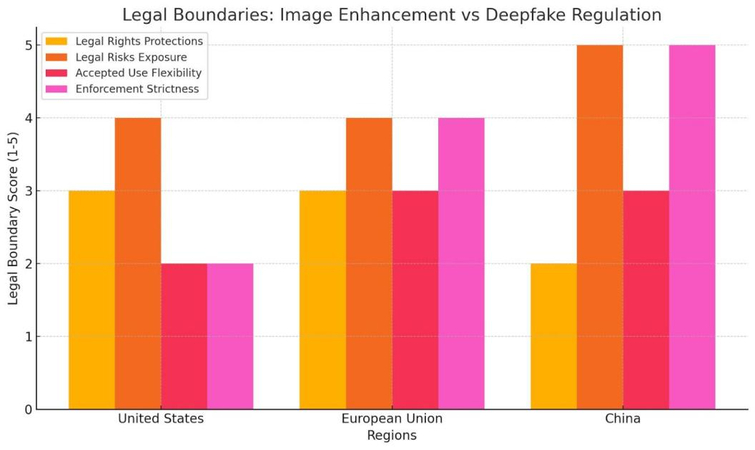
United States Legal Framework
Although there is no federal law expressly forbidden deepfake creation in the United States, several current laws apply:
Legal Rights laws cover First Amendment protections for genuine artistic expression, fair use provisions for educational and commentary purposes, and professional use for legitimate enhancement needs.
Legal Risks cover state-level retaliation porn laws for non-consensual intimate deepfakes, Federal fraud regulations when used for financial deception, evidence tampering allegations for false legal evidence, defamation lawsuits for harmful false content
European Union Rules
The EU has enacted through legislation covering AI-generated material:
GDPR offers protection against unapproved use of personal pictures
The AI Act contains certain provisions for high-risk AI applications. Digital Services Act obliges platforms to identify and delete unlawful deep fake content
Strict permission requirements for using someone's likeness, strong privacy protections under GDPR, excellent enforcement mechanisms for victims, and platform liability for hosting illegal material define legal limitations.
Acceptable uses: Personal picture improvement with appropriate consent, professional restoration services using open procedures, and educational use with suitable warnings
China's Approach
China has enacted some of the world's strictest deepfake regulations through the Provisions on Deep Synthesis Regulations (2023). These rules aim to curb the misuse of AI-generated content by requiring clear labeling of manipulated media and holding both users and platforms accountable. Criminal sanctions apply to those who use deepfakes to spread misinformation, defame others, or threaten national security. The regulations also outline legal uses of deep synthesis technology.
Acceptable applications include artistic and educational content, provided there is full disclosure of AI involvement. Commercial use is permitted but must follow approved procedures and obtain proper permissions. Additionally, personal use is allowed under specific guidelines to ensure it does not violate public interest or individual rights. By implementing these provisions, China seeks to balance innovation with ethical responsibility in AI content creation.
Part 3: How to Use AI Photo Tools Legally and Reasonably
To be on the legal side, it is important to choose the appropriate AI photo tool to defend the rights of users and responsible use of images.
Choose AI Photo Tools with Transparent Processing
Look for tools that have features of transparency, e.g. clear terms of service, data policy, and description of processing and storage of images. Platforms that reveal whether the content is taken as training or kept are more reliable.
Signs of a good reputation, such as positive user review, third-party endorsement, frequent updates, and evidence of company support should be sought out. Trustworthy tools provide interactive customer services and full documentation too.
Tools that raise red flags to avoid include tools that provide unrealistic results, have vague usage directions, have no customer service, or were created by anonymous or unquestionable entities. They are commonly indicators of low legal and ethical ratings.
Follow the Use Guidelines of AI Photo Tools
Adherence to established guidelines is necessary for responsible use:
- Maintain original files for comparison
- Document all changes made to photographs
- Use tools only for their intended applications
- Acquire appropriate permission while working with images of others
- Read and comprehend all terms of service
Part 4: Why HitPaw FotorPea Is a Safe and Legal Solution for Image Restoration and Enhancement?
Professional AI-powered image improvement software HitPaw FotorPea (formerly HitPaw Photo Enhancer) was developed specifically with ethical use and legal compliance in mind. Unlike solutions that blur the line between enhancement and manipulation, HitPaw FotorPea targets only genuine restoration and enhancement uses.
While putting safeguards to stop misuse, the software gives openness, user control, and genuine augmentation top emphasis. This fits both business consumers needing legally compliant picture improvement tools and individual users.
Key Features of HitPaw FotorPea
Focusing on restoring real details without false additions, HitPaw FotorPea emphasizes preserving actual features without phony inclusions. Moreover, it uses sophisticated algorithms to reveal original picture content and keeps image authenticity throughout the enhancement process.
- Restore old photos and colorize black and white photos
- Remove temporary obstructions or unwanted objects from photos
- Easily make pictures less blurry and remove the noise from pictures
- Enlarge and upscale images to 4K/8K without quality loss
- Multiple photo enhancement modes to suit different scenes.
- Portrait optimization for professional headshots, landscape enhancement for nature photography, and general mode for daily photo improvement.
- Allows batch processing for many photos
- No Deepfake function voids the risk of counterfeiting, suitable for personal and professional users.
- Transparent processing with visible change tracking
It all makes it good for personal as well as business use and it's also compliant with global image processing standards.
How to Use HitPaw FotorPea to Enhance Your Image Step by Step
Step 1: Download and Install HitPaw FotorPea
The first step is to go to the official website of HitPaw or use the download button to obtain the software up to date.
After downloading the installer, double-click the file to install it. Once installed, open HitPaw FotorPea and use it.

Step 2: Upload the Original Photo

Click on the Enhance Photos Now to begin the journey of enhancement.
You are able to import your picture by clicking on Choose File button or just dropping the photo in the interface by clicking and dragging it there.
HitPaw FotorPea developers popular image formats such as JPG, JPEG, PNG, WEBP, as well as TIFF-thus you can process most images without conversion.
Tip: To give an idea of the enhancement effect, you can use the sample image that is inside the tool before you use you own image.
Step 3: Choose the Best AI Model for Your Image
HitPaw FotorPea provides an efficient set of AI models to fit various image enhancement requirements. The facial features are augmented in a natural way using these models that help the image comply with copyright laws.
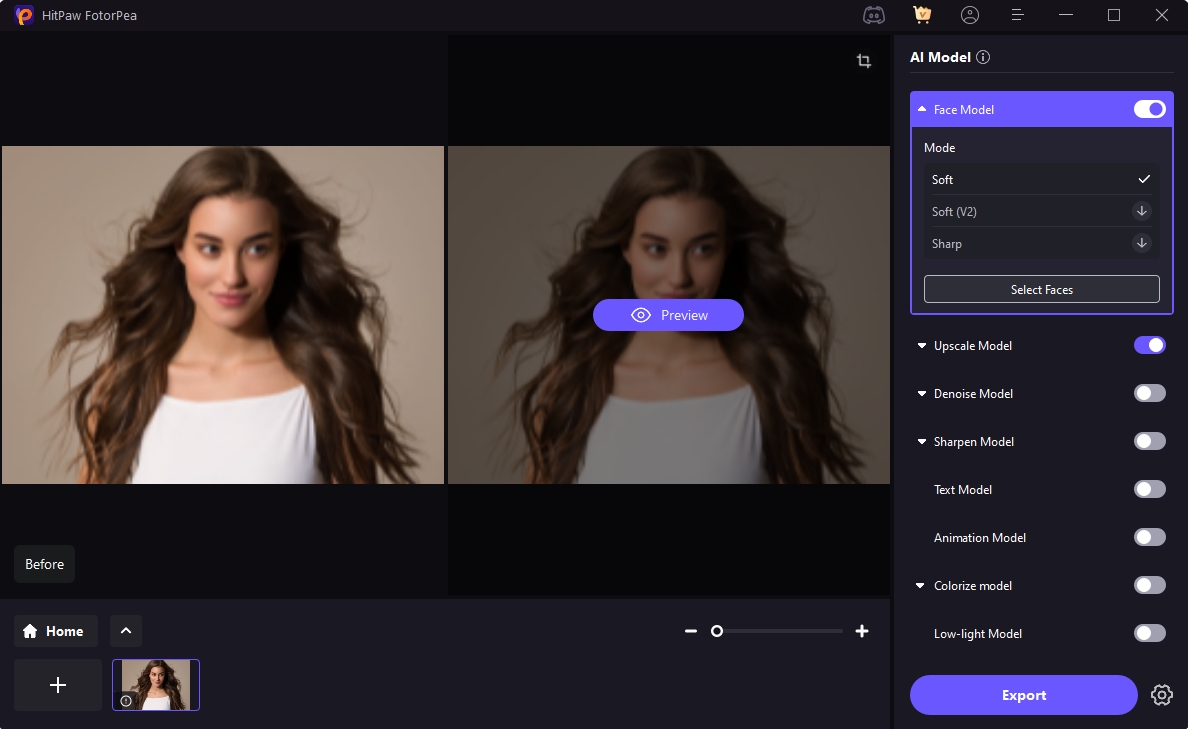
In addition to them, you will see some other models as well
Step 4: Preview and Process

Once you are delighted with the end-result improvement, press on the Export button to preserve your better-quality, refined picture to your device.
Compliance & Legal Use: HitPaw FotorPea is fully compliant with all usage rights-suitable for personal, educational, and commercial photos. You retain full ownership of your enhanced images!
Frequently Asked Questions
Q1. Is it legal to use AI tools to restore old family photos?
A1. Indeed, using artificial intelligence software for family picture repair is totally legal and quite acceptable. Using this kind of repair helps photographs to be restored to their original state by clearing damage and improving clarity. Because the aim is to expose original details rather than make fresh content, family photo restoration fits well inside legislative boundaries across all main countries.
Q2. What kind of AI image enhancement is considered illegal?
A2. Illegal AI image enhancement results in fraudulent or misleading content, like placing people in situations they never lived, producing non-consensual intimate pictures, or creating false evidence for court procedures.
Q3. How can I tell if an AI photo editing tool is safe and compliant?
A3. From reputable developers with defined usage guidelines, safe AI photo editing tools offer honest information about their processes and concentrate on enhancement rather than content creation.
Conclusion
In the current digital scene, knowing the legal limits of AI-powered picture repair and augmentation is vital. Users looking for strong enhancement features while still compliant with the law may find the perfect answer in HitPaw FotorPea. Its transparent processing and multiple face models make it the best option for both professional and personal usage. It gives genuine restoration free of deepfake features. Choosing appropriate tools like HitPaw FotorPea and sticking strictly within legal limits by following best practices for their application allows users to use the power of artificial intelligence image enhancement.




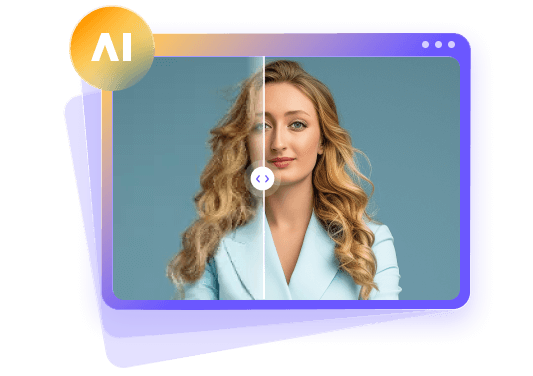





 HitPaw Univd (Video Converter)
HitPaw Univd (Video Converter) HitPaw VoicePea
HitPaw VoicePea  HitPaw VikPea (Video Enhancer)
HitPaw VikPea (Video Enhancer)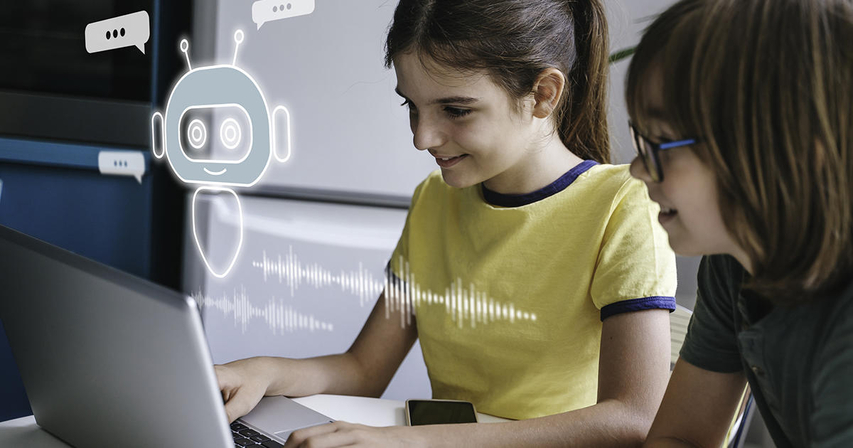

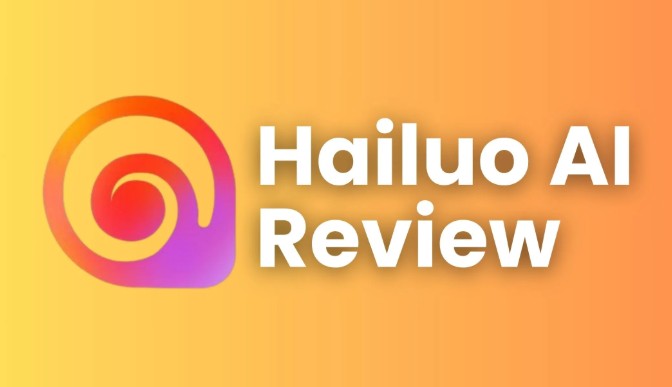

Share this article:
Select the product rating:
Daniel Walker
Editor-in-Chief
This post was written by Editor Daniel Walker whose passion lies in bridging the gap between cutting-edge technology and everyday creativity. The content he created inspires the audience to embrace digital tools confidently.
View all ArticlesLeave a Comment
Create your review for HitPaw articles